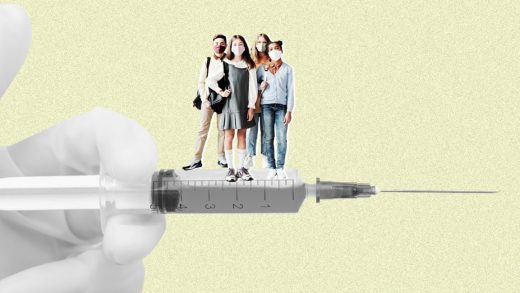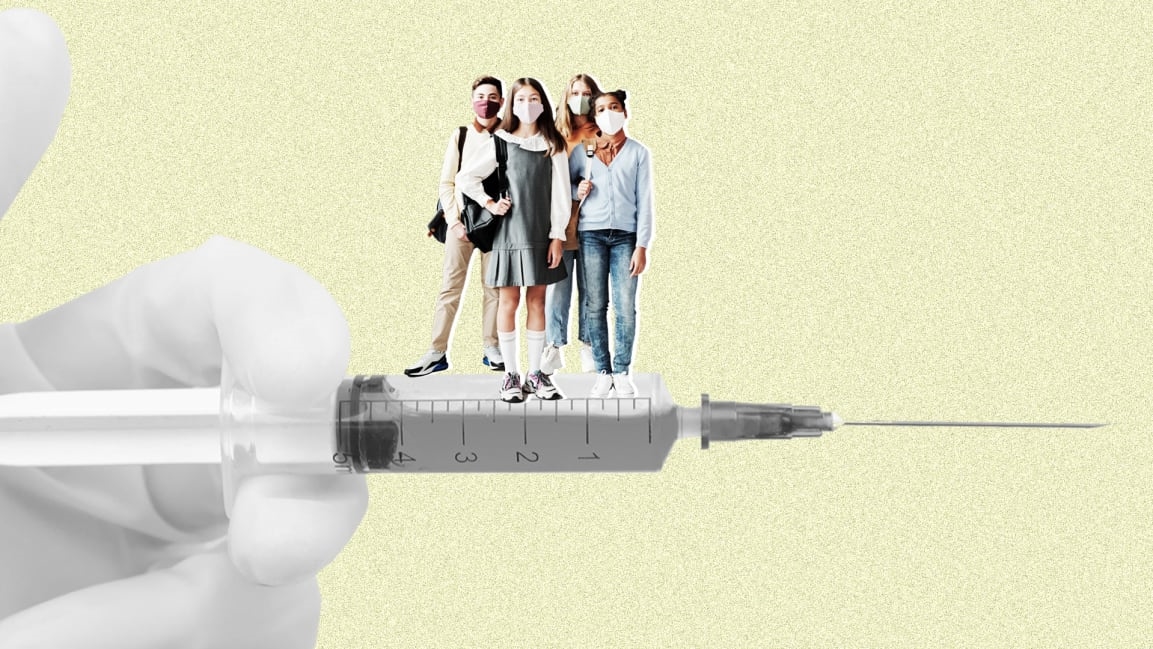Only 3 in 10 parents want to vaccinate their teens against COVID-19
The Kaiser Family Foundation’s April vaccine monitor data shows that vaccine uptake is hitting a plateau. The biggest concern may be among young people.
The KFF monitor shows that a quarter of those aged 18 to 29 are waiting to see how the vaccine works in the greater population before they seek out it out for themselves. Meanwhile, the vast majority of parents of children aged 12 to 15 are either adopting a wait-and-see approach, only willing to vaccinate if schools require, or not willing to vaccinate their child at all against COVID-19. Only 30% said they would definitely vaccinate their children once the vaccine was available to them.
Teens over the age of 16 are already able to get the Pfizer vaccine, and the Food and Drug Administration is set to expand access to the Pfizer vaccine for children ages 12 to 15 next week. Meanwhile, Moderna, which is available to adults 18 years of age and older, has just announced that its vaccine is 96% effective among teens ages 12 to 17.
“If we want to reach herd immunity we are going to need younger people to get vaccinated as well,” says Julie Swann, head of Industrial and Systems Engineering at North Carolina State University who was a science advisor to the Center for Disease Control and Prevention during the H1N1 pandemic response. Using CDC data, she calculates that the percentage of 18- to 24-year-olds with one dose of the vaccine is now 33%, and two doses is 19%. Reaching herd immunity, she says, may require having more than 70% of the population vaccinated, especially with more infectious strains of COVID-19 circulating (which the vaccines are proving effective against).
“I am particularly worried about the college students,” she says. Students on campus have only had access to vaccines for a short time and are about to travel back into their home communities, opening up the opportunity for a new wave of transmission. “You’ve got to [vaccinate] them right before they go home or right as they show up.”
Despite slow vaccination rates among young people, there are good signs that vaccination hesitancy is declining. The KFF survey shows that 64% of adults say they’ve been vaccinated or intend to. Over half of Republicans, who have been more reluctant to get vaccinated than Democrats, have gotten at least a first dose of the vaccine or plan to. More interestingly, the percentage of Republicans who said they would never get vaccinated has also gone down to 20% from 29% in March. Overall, the portion of Americans who were waiting to see how the vaccine rolled out has been on the decline. However, that hesitant group seems to be settling at around 15%.
Young people in particular may feel like they don’t need the vaccine because they may believe they’re less susceptible to the more devastating effects of the virus, but that’s not true. Young people may not be as likely to die from the disease, but those who get COVID-19 can suffer long lasting symptoms.
“One way to get more vaccinations is to get people to understand that it’s about protecting their mother and their father and their grandparent and their aunt and their uncle and their neighbor,” says Swann. “Our society cannot go fully back to normal until we have more people vaccinated.”
The data seems to suggest that more outreach will be needed to reach higher vaccination numbers. Over 60% of those who want to be vaccinated but haven’t gotten the shot yet haven’t tried to make an appointment. Among the top reasons why they haven’t gotten an appointment are scheduling conflicts and a lack of information on how and where to get vaccinated.
Public messaging efforts from health officials, pharmacies, local health systems, and from peers will be very important in getting more people to get vaccinated. But Swann says state and local governments are also going to have to do more intensive outreach in order to help people who have not yet gotten a shot overcome the myriad barriers to getting a vaccine. They may have the time to get vaccinated, but not be able to take off of work if the vaccine has side effects. People in rural communities may not have easy access to a pharmacy or other vaccination site.
Some counties around the country are already taking steps to bring more vaccines into less resourced communities. For example, Rhode Island distributed the vaccine within public housing complexes to great success.
“We are going to have to come up with all of these different strategies to meet people where they are and different people are going to need different elements,” says Swann. “Ultimately, there may have to be more outbreaks for people to take it seriously.“
(33)



